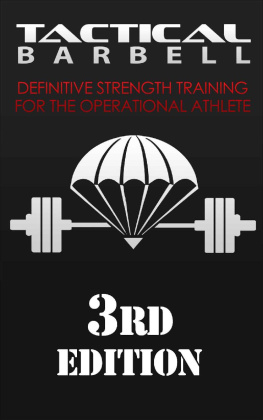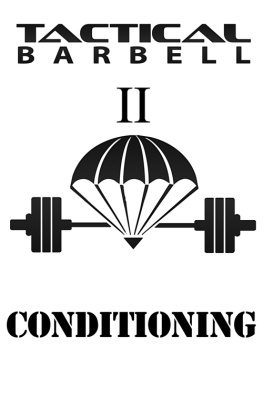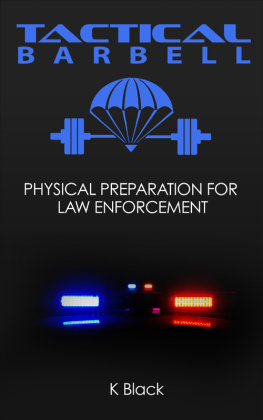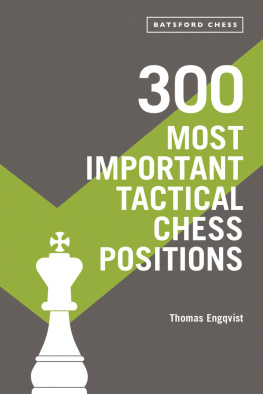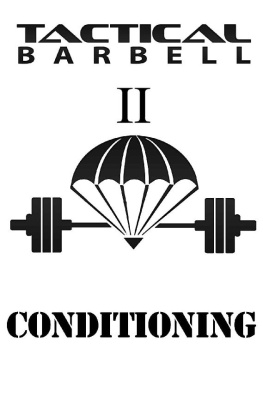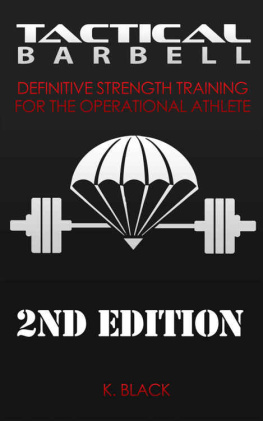Tactical Barbell I and II were initially written with a unique population in mind; tactical law enforcement and military special operations/combat-arms. Excessive mass is usually detrimental for this group, particularly the military side of the house. Every ounce of weight that isnt contributing to performance is felt tenfold in the field. The trick is to develop a high strength-to-weight ratio like a prize fighter. That said, the Tier 1/Tier 2 population is a minority in the tactical world.
The majority - patrol officers, paramedics, firefighters, corrections and others can get away with having greater amounts of muscle mass. In many cases its an occupational benefit.
Take uniform/patrol for example. On the street having a capable-looking physique can be a major psychological advantage a bad guys perception of your abilities can shape his behaviour. As many of you in the field know, officer presence affects subject response during any given interaction. Your partner may be a BJJ black belt but if he looks like he cant handle himself chances are hes going to put up with a lot of crap when dealing with clients. On the other hand, you might not be able to fight your way out of a wet paper bag, but if you look like the Rock, the bad guys are going to think twice before engaging. Same thing goes for Corrections. Even among the inmates, physical presence has an impact on prison hierarchy.
How about firefighters? Having functional mass can offset all that heavy gear. Would you rather be 130lbs wearing 75lbs of gear, or a muscled 185? I know which one Id pick.
Enter Mass Protocol. This program was developed and refined for the operational professional looking to build muscle and improve physical presence, whatever the reason. Whether youre a recruit beefing up for that first patrol assignment or a seasoned UC trying to develop a certain look, Mass Protocol will get you there. Regardless of objective, Mass Protocol will be an invaluable addition to your toolbox.
A Brief History Lesson
In roughly 3 years I went from 150 to 185lbs. Bodyfat from approximately 5% to 9%.
Thats roughly 30lbs of muscle. 30lbs in three years isnt really that exceptional in and of itself. Except that muscle mass was never my goal it happened accidentally. Kind of.
Back then, performance, not size, was my number one objective. That mindset came about in the military. Time on the job lead me to the conclusion that excessive weight of any kind was incompatible with field work. Key word being excessive .
My accidental mass gain was set in motion when I left the military and started a career in law enforcement. I was barely 150lbs during the transition. My training, eating habits, and lifestyle changed. The changes were gradual. Some were unintentional. Eventually those changes left me with that 30lbs of extra muscle mass. In hindsight, and armed with a little knowledge, its easy to see why it happened.
There is a point to all of this, so lets get into the details.
In the military my lifestyle was generally endurance based. Long runs, ruck marches, field exercises, and ops. I supplemented strength training on my own time.
In law enforcement my life stopped being about endurance. I was 100% responsible for my own training. No mandatory PT, no section commander or squad leader setting the pace, no bag-drive out in the bush for weeks or months at a time. It was a cushy and welcome change. It freed me up to spend more time in the weight room while allowing me to keep less in reserve. If I wanted to do a 20-rep squat routine, I could no 10k unit run at zero-dark-thirty to worry about. My cardiovascular training drifted to sprints and high intensity interval training. HIIT was starting to gain popularity at the time so I dumped the endurance work with glee and jumped on the bandwagon. It simply wasnt necessary for me to have the physical readiness to go on a 20 or 30km ruck march anymore.
My strength training went from minimal low-rep sets to experimenting with higher volume protocols and various rep schemes.
So, quick recap; I went from an endurance-based lifestyle coupled with minimalist strength training - to brief HIIT sessions and more time in the weight room. In the military I would frequently train twice a day; once in the morning with the unit, and later in the evening on my own time doing my own thing. That didnt happen in law enforcement. I averaged one training session per day, 5 to 6 days per week. Training rarely went over an hour. So, lets add a drastic reduction in overall training volume to the formula.
Food. Significant changes in this area. In the military I was heavily into carb conscious diets. I used The Zone Diet and experimented with early versions of the ketogenic diet. I calculated macros and ate the same rotation of 4 or 5 meals. In hindsight I barely met my daily calorie requirements. I couldve easily used another 1000 calories, but I didnt know any better. My body was running on youth, ignorance, and stimulants. In law enforcement, the combination of odd-hours and relying more on restaurant food forced me to relax my diet somewhat. I started eating more carbs. I started eating more food overall.
Its important to note I was training regularly - at least 5 or 6 days a week, but with the changes noted above. I was habitual. I rarely missed training sessions, be they strength or conditioning. My mass gain was mostly effortless, but my training consistency was already in place . The base was there, only the variables changed.
All those little tweaks and lifestyle changes resulted in a shift from that extremely lean 150lbs to a much larger (but still lean) 185lbs.
None of this is meant to imply that you need a certain occupation to gain mass. The point of all of this is that a change in career made it easy for me to look back and clearly identify the factors responsible for the mass gain. Once identified, it was a simple process to reverse engineer and repeat.
Reverse engineering is a wonderful thing. It took me almost three years with no intentional process to gain 30lbs of quality lean body mass. If youre consistent with this protocol, you might do it in less. My programming changes were implemented gradually over the years with periods of experimentation youll be starting with the correct methods on Day 1. Youll be consistent from the get-go. No time wasted on trial and error.
Another great thing about reverse-engineering is that it allows for optimization. We improved upon the areas responsible for my muscle gain beyond my accidental process. For example, most of the strength training templates I experimented with werent as good as they couldve been had mass been the primary objective. The templates in this program are specifically designed for maximum hypertrophy while staying true to some of the principles that brought about my own results.
All the little changes, all the reverse-engineering and optimization, ultimately lead to what I call the Holy Trinity.
The Holy Trinity
After boiling down all the changes in training, diet, and lifestyle I was left with three primary factors responsible for mass gain. The Holy Trinity. All three MUST be addressed for the natural trainee to successfully build quality muscle mass;


